It is an approach that promotes the regeneration of natural habitats through the replanting of native species and the use of bees to accelerate restoration. This is achieved by enhancing seed banks through increased levels of pollination, highlighting the role of pollinators, which are essential for promoting biodiversity.
HOW POLLINATION BOOSTS BIOME RESTORATION
Pollination carried out by bees plays a crucial role in accelerating biome restoration, as it is essential for the reproduction of various plants that make up these ecosystems. Bees are responsible for transferring pollen between flowers, which allows fertilization and, consequently, the production of seeds and fruits. This process has several positive implications for biome restoration:

DIVERSITY OF SPECIES
By promoting the reproduction of a wide range of plants, bee pollination contributes to the plant diversity of biomes. This is important because plant diversity is essential for ecosystem resilience and for providing habitats and food for other animals.

NATURAL REGENERATION
Pollination facilitates the natural reproduction of plants, allowing the expansion of native species in degraded areas. This contributes to the formation of a denser and healthier vegetation, essential for soil recovery and ecosystem stability.

INCREASE IN VEGETATION COVER
Pollination facilitates the natural reproduction of plants, allowing native species to expand in degraded areas. This contributes to the formation of denser and healthier vegetation, which is essential for soil recovery and ecosystem stability.

RESTORATION OF THE FOOD CHAIN
The presence of flowers and fruits resulting from pollination also attracts other animals, such as birds and small mammals, reestablishing part of the biome’s food chain. This helps maintain ecological balance and supports the recovery of different species populations.

ECOSYSTEM SERVICES
By promoting the reproduction of a wide range of plants, bee pollination contributes to the plant diversity of biomes. This is important because plant diversity is essential for ecosystem resilience and for providing habitats and food for other animals.
This process involves the following stages:
PLANTING NATIVE FLORA INTEGRATED WITH BEEKEEPING
regeneracao-biomas.section6.description
HABITAT CREATION
Develop and maintain habitats that support bee life, such as areas with available water and safe nesting sites. This can include installing hives or preserving natural areas that serve as shelters for wild bees. Creating these habitats will also encourage the return of wildlife, attracting birds, reptiles, insects, and mammals due to the increased availability of food sources and nesting areas. The food chain will gradually be reestablished over time.
SUSTAINABLE MANAGEMENT
Apply management practices that minimize environmental impact, such as natural pest control and avoiding the use of pesticides, which can be harmful to bees.
EDUCATION AND COMMUNITY ENGAGEMENT
Promote education and community engagement so that local communities understand the importance of bees and biome restoration, encouraging active participation in projects and the adoption of sustainable practices.
MONITORING AND RESEARCH
Maintain regeneration practices and expand the project to new degraded areas.
